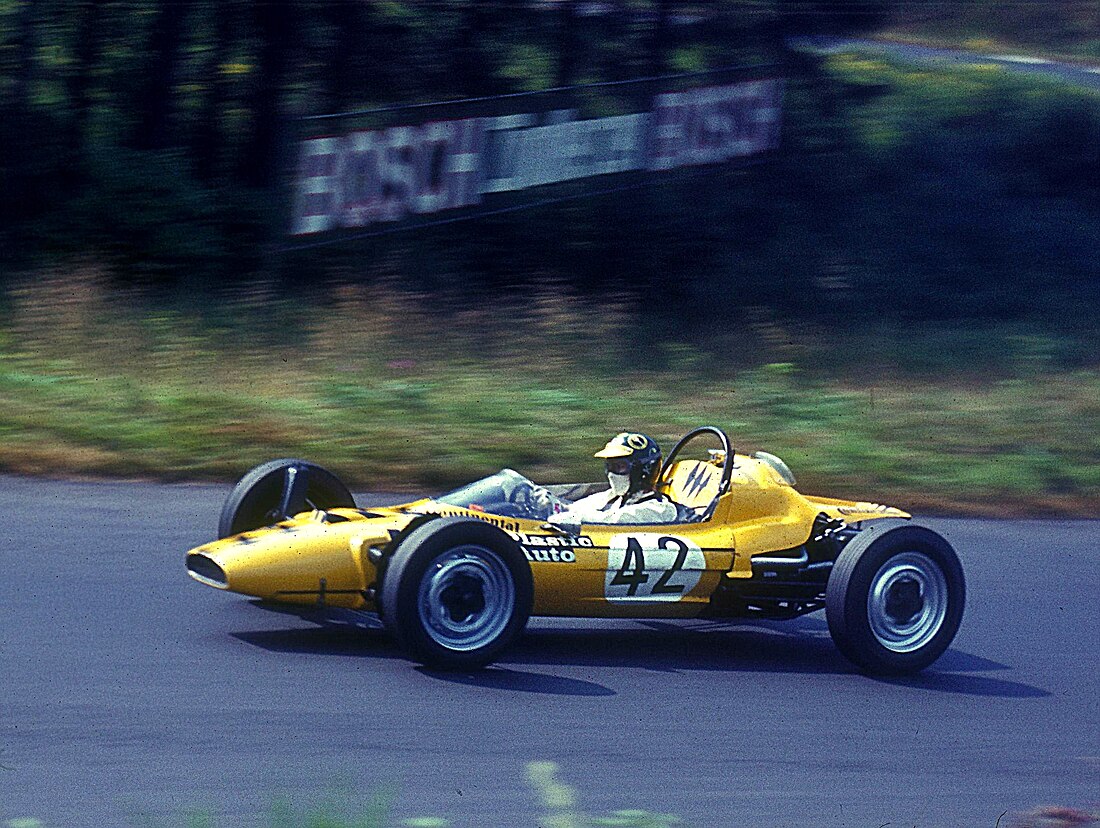Top Qs
Timeline
Chat
Perspective
Formula Vee
Race car class From Wikipedia, the free encyclopedia
Remove ads
Formula Vee (Formula Fau Vee in Germany) or Formula Volkswagen is an open wheel, single-seater junior motor racing formula, with relatively low costs in comparison to Formula Ford.


On the international stage, Niki Lauda, Emerson Fittipaldi, Nelson Piquet and Keke Rosberg, all Formula 1 champions, and Scott Dixon, a six-time IndyCar champion, raced Formula Vees in Europe, New Zealand, or America at the beginning of their careers. In Australia, V8 Supercar drivers Larry Perkins, Colin Bond, John Blanchard, John Bowe, Jason Bargwanna and Paul Stokell were also racers in Formula Vee.
Formula First, raced in the US and New Zealand, employs the same chassis, but with upgraded motor, brakes and steering. Australia's modern Formula Vee car rules are the definition for Formula First in these countries
Remove ads
Description
Summarize
Perspective
The class is based on the pre-1963 Volkswagen Beetle, utilizing a collection of stock parts to form a competitive race car around a purpose-built tube frame and racing tires. The VW engine, transmission, front suspension, brakes, and wheels are stock or modified stock parts. The body is fiberglass or carbon fiber. The intention of this class is for the average person to be able to build and maintain the car.[citation needed]

Over the years, the rules have evolved to improve performance, lower cost, and to allow the replacement of discontinued parts. In 2003, Grassroots Motorsports presented Formula Vee with the Editors' Choice Award.[1]
Unlike many open-wheel formulas, Formula Vee cars are not permitted to use wings or ground effect to produce aerodynamic downforce. The lack of these features, the limited engine power, and the similar performance of the cars makes taking advantage of slipstreaming a key tactic.[2]
The engines are based on either the 1200cc or 1600cc variants of the Volkswagen Beetle engine. Unlike many amateur categories, competitors are permitted to build and tune their engines themselves, within strict limitations on the extent of modifications from stock permitted. The 1600cc engines used in the Australian Formula Vee series produce approximately "70-75hp";[2] the original 1200cc engine produces considerably less. This makes Formula Vee cars among the least powerful vehicles used in circuit racing (for comparison, the contemporary Formula 4 category uses 160 hp engines).
A top-running Formula Vee car will go 190 km/h (120 mph) and corner at about 1.6 g. It weighs a minimum of 465 kg (1,025 lb) with driver or 500 kg (1,100 lb) with driver as raced in the Australian 1,600 cc (98 cu in) specification.[3][4]
Purchasing and running a Formula Vee car is relatively affordable compared to most motorsport categories. In 2022, a brand-new race car for the Australian Formula Vee series was estimated to cost approximately AU$50,000 to AU$55,000 (approximately $US37,000), with competitive second-hand cars costing much less.[citation needed] Renting a car for a race meeting was estimated at $A1000 (approximately $US700).[5]
In the US, Formula Vee is one of the classes at the SCCA Runoffs, which awards a national championship. While it is primarily a class in the Sports Car Club of America, many other organizations have adopted Formula Vee as a class.[citation needed]
Remove ads
Variants
Variants of the Formula Vee rules exist in Australia, Brazil, Canada, Germany, the UK & Ireland, South Africa, and New Zealand.
Particularly notable is Formula First, racing in the US and New Zealand, which employs the same chassis, but with later model Beetle parts, a larger 1,600 cc (98 cu in) motor (New Zealand uses the 1,200 cc [73 cu in] variant) and other upgraded components such as disc brakes and rack and pinion steering.[citation needed]
(Formula Super Vee, although initially similar, soon moved to water-cooled 1.6-litre (98 cu in) VW four-cylinder engines for higher-tech and faster cars).
Remove ads
List of Formula Vee championships and Events
See also
External links
Wikimedia Commons has media related to Formula Vee.
- Driverz Cup
- Pacific Challenge Cup CANADA/USA
- http://www.nefv.org/ Northeast Formula Vee USA https://www.facebook.com/groups/nefv.org
- Challenge Cup Series (US, South Africa & Brazil collaboration)
- Formula First USA
- formulaveeracing.org (US)
- formulavee.us (US)
- ApexSpeed.com (US)
- Formula Vee (Ireland)
- Australian Formula Vee Website
- Australian Formula Vee Specifications
- New Zealand Formula First (née Formula Vee)
- Formula Vee (UK)
- 750 Motor Club (UK organising club)
- Formula 1200 – Canada
- Formula Vee South Africa
- Historic Formula Vee in Australia Archived 2009-03-02 at the Wayback Machine
- Historische Formel Vau Europa
- Formula Vee Brazil
- Pacific Challenge Cup CANADA/USA
Remove ads
References
Wikiwand - on
Seamless Wikipedia browsing. On steroids.
Remove ads
